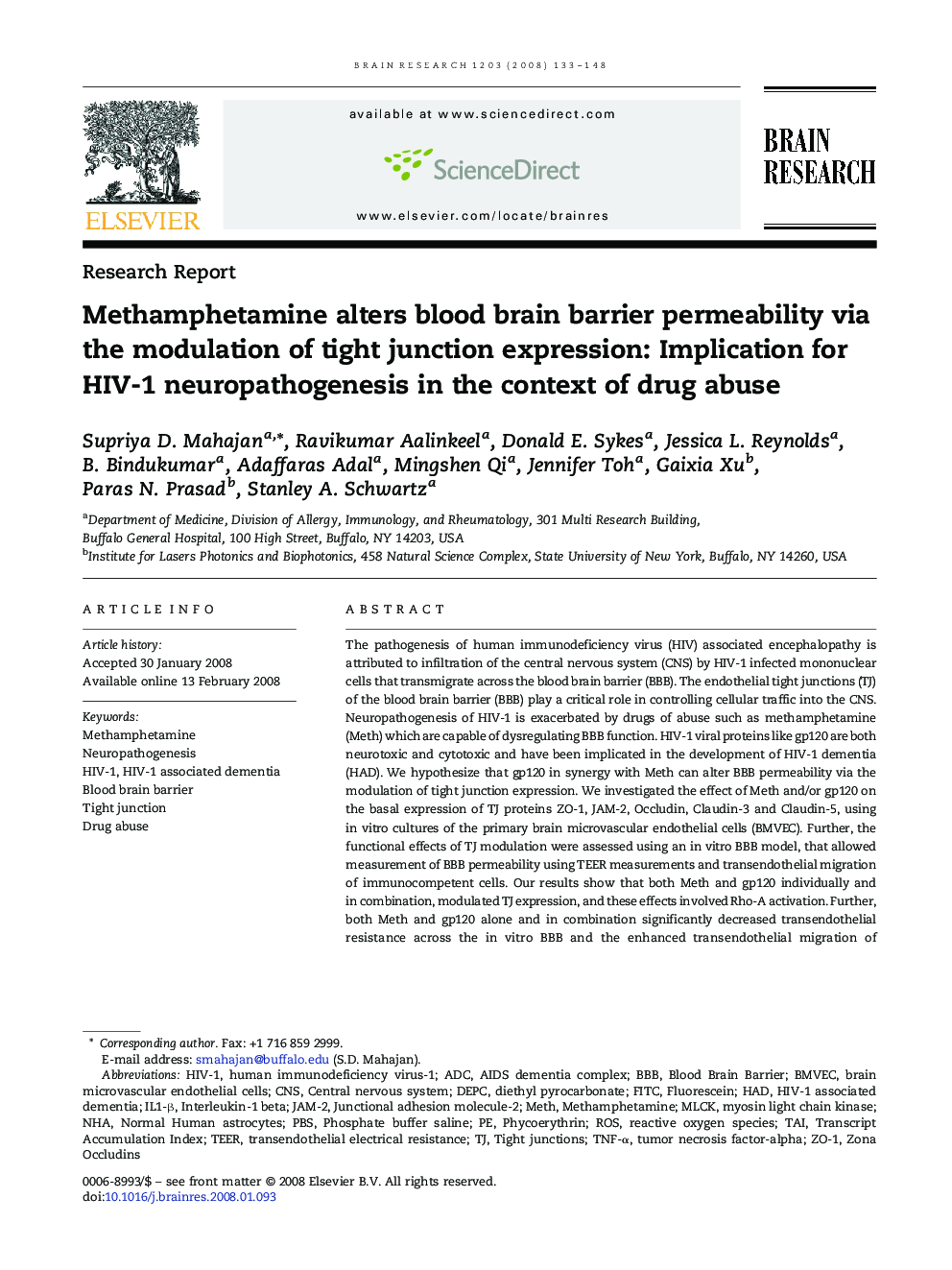| Article ID | Journal | Published Year | Pages | File Type |
|---|---|---|---|---|
| 4329962 | Brain Research | 2008 | 16 Pages |
Abstract
The pathogenesis of human immunodeficiency virus (HIV) associated encephalopathy is attributed to infiltration of the central nervous system (CNS) by HIV-1 infected mononuclear cells that transmigrate across the blood brain barrier (BBB). The endothelial tight junctions (TJ) of the blood brain barrier (BBB) play a critical role in controlling cellular traffic into the CNS. Neuropathogenesis of HIV-1 is exacerbated by drugs of abuse such as methamphetamine (Meth) which are capable of dysregulating BBB function. HIV-1 viral proteins like gp120 are both neurotoxic and cytotoxic and have been implicated in the development of HIV-1 dementia (HAD). We hypothesize that gp120 in synergy with Meth can alter BBB permeability via the modulation of tight junction expression. We investigated the effect of Meth and/or gp120 on the basal expression of TJ proteins ZO-1, JAM-2, Occludin, Claudin-3 and Claudin-5, using in vitro cultures of the primary brain microvascular endothelial cells (BMVEC). Further, the functional effects of TJ modulation were assessed using an in vitro BBB model, that allowed measurement of BBB permeability using TEER measurements and transendothelial migration of immunocompetent cells. Our results show that both Meth and gp120 individually and in combination, modulated TJ expression, and these effects involved Rho-A activation. Further, both Meth and gp120 alone and in combination significantly decreased transendothelial resistance across the in vitro BBB and the enhanced transendothelial migration of immunocompetent cells across the BBB. An understanding of the mechanisms of BBB breakdown that lead to neurotoxicity is crucial to the development of therapeutic modalities for Meth abusing HAD patients.
Keywords
HIV-1 associated dementiaTEERPBSBMVECFITCADCZO-1IL1-βDEPCMLCKnHATAIROSTight junctiontight junctionsInterleukin-1 betatumor necrosis factor-alphaHADCNSdiethyl pyrocarbonatemyosin light chain kinaseblood brain barrierBBBbrain microvascular endothelial cellsDrug abusecentral nervous systemNormal Human astrocytesTNF-αphycoerythrinphosphate buffer salineFluoresceinMETHMethamphetaminetransendothelial electrical resistanceNeuropathogenesisHIV-1human immunodeficiency virus-1AIDS dementia complexReactive oxygen species
Related Topics
Life Sciences
Neuroscience
Neuroscience (General)
Authors
Supriya D. Mahajan, Ravikumar Aalinkeel, Donald E. Sykes, Jessica L. Reynolds, B. Bindukumar, Adaffaras Adal, Mingshen Qi, Jennifer Toh, Gaixia Xu, Paras N. Prasad, Stanley A. Schwartz,
